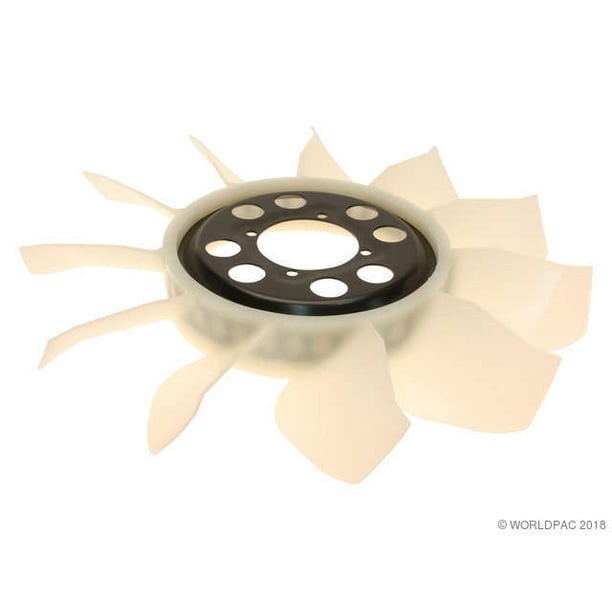The 15-Second Trick For Fan Blades
Table of ContentsSee This Report on Fan BladesFan Blades for DummiesFan Blades for DummiesNot known Details About Fan Blades
CLA-2-84: RR: NC:4:102 A84377 Mr. Walter R. MannsFord Motor CompanyWest Park CenterP.O. Box 6094Dearborn, Michigan 48121RE: The tariff category of fan clutch drives from either Canada or GermanyDear Mr. Manns: In your letter dated Might 24, 1996 you asked for a tariff classification ruling. The items at problem are a series of viscous clutch fan drives imported for usage with vehicle cooling fans.
This thick fluid permits torque to be transferred from the engine disk to the fan disk, therefore driving the connected fan blade. Design number 712 (Visctronic) functions somewhat in a different way because it is an electronically controlled, variable speed viscous drive. Instead of counting on direct temperature level action of the thermostatic coil, the valve is regulated by the engine management control system.
The relevant subheading for the fan clutch drives will be 8483. 60.4000, Harmonized Tariff Set Up of the United States (HTS), which attends to clutches. The rate of responsibility will be 4. 5 percent advertisement valorem. Because these clutch units are thought about to be practical parts of the vehicle engine, the exclusionary language governing heading 8483 would not apply.


The 7-Second Trick For Fan Blades
Whether you tow or not, this fan clutch is an excellent addition to any 6. 5 for enhanced cooling/reliability. See the short article here: http://www. 62-65-dieselpage. com/reviews/fanclutch. htm Based on my own personal experience with my 1996 GMC, and the reports from numerous others, the factory fan clutch calibration is much too expensive for correct engine cooling.
This coil temp, while directly related to engine coolant temperature, is a much lower worth. fan blades. For the most part, it takes well over 220 coolant temperature through the radiator to attain this point. In fact, the "kill temp" or the specified max engine coolant temp determined at the thermostat outlet is defined at 240.
The quick swing from 220+ down to 180 can be extremely hard on the cylinder heads and gaskets and so on. The revised calibration moves the engagement pointdownward by 15f. This downward slide moves the entire fan engagement curve lower, keeping the engine coolant temperature level a lot more stable. By beginning the engagement curve previously, we also improve cooling, transmission fluid, and engine oil cooling In many cases, with this modified curve, complete clutch engagement is not even essential.
The engagement curve is what is essential, and this is just regularly repeatable through factory calibration when the units are built. The bimetal springs are the exact same, and no lower temperature springs are available. The clutches are built with a modification in the proximity of the spring and valve to the internal fluid port so read this post here that by 180 the port is open to get complete engagement.
The clutch for every single offered condition will only pull a specific amount of torque. We will utilize 30 lb/ft as an visite site example at complete engagement. Offered the 30 lb/ft rating, the addition of a bigger blade will NOT pull any more air UNLESS the larger blade is more efficient, easy physics.
What Does Fan Blades Do?
25x 2500 engine RPM) 20" blade RPM 2900 @ 30 lb/ft21" blade RPM 2750 @ 30 lb/ftBoth blades will be pulling similar, if not similar CFM ratings, BUT, the 21 blade will be generating increased slip speed causing higher stress on the clutch. These will be offered for serpentine belt, reverse rotation only.
2l and 6. 5L models in the brand-new body style from 1988 on. If you have a screw on clutch center with important sheave, you will require to change to the 98 water pump/pulley, or wait to see if need is sufficient to make a production run of this part as well.
I advise the High Capability Cooling modifications initially to guarantee appropriate coolant circulation and to decrease the stagnant flow the original source areas reducing the circumstances of head fractures, and localized locations in the engine. Pre 1997 designs used a 6 blade 20" steel fan with a very large pilot and 6 installing bolts.
The new clutches will be of the 1997 and later on design so if you do not have a small pilot, 4 bolt, 9 blade fan, you will need one. I also have these available. Either 20" steel vs. 21" plastic blade will work fine. The clutch has actually been designed/tested with the 20 steel blade which will fit with outright certainty and no clearance concerns.
This blade has NOT been evaluated with this clutch calibration. I personally prefer the 20 steel blade for the direct fit and the stiff construction. It just plain moves air where the plastic system can bend especially when warm. Personally, I prefer 195 thermostats. This is based on my observations that this temperature level variety produces optimal effectiveness and power.
Not known Incorrect Statements About Fan Blades
It has actually been stated that the 195 thermostat is not fully open until roughly 220f BUT with dual thermostats, the flow even partially open is rather substantial, and in all however the most severe cases plenty appropriate. The option is yours, I provide both temp rankings for the double thermostat setup.
When you consider an automotive cooling system, the very first thing that likely enters your mind is your radiatoror perhaps your cooling fan. The oft-overlooked doesn't get a lots of credit or attention, however it's an important piece of the cooling equation in numerous lorries (fan blades). It helps your cooling system operate efficiently and your engine operate effectively.